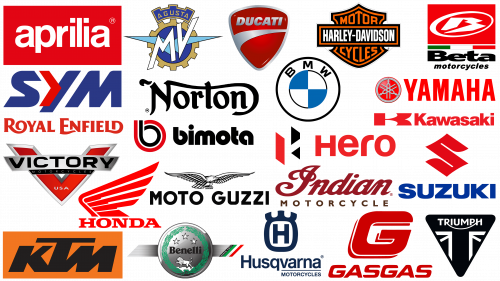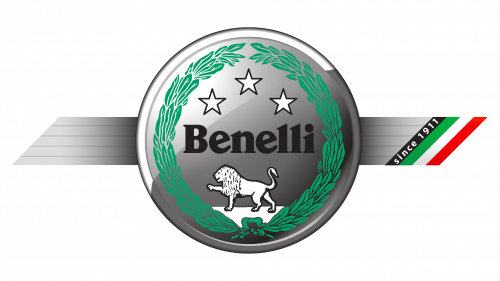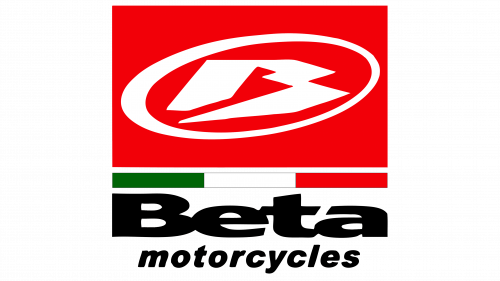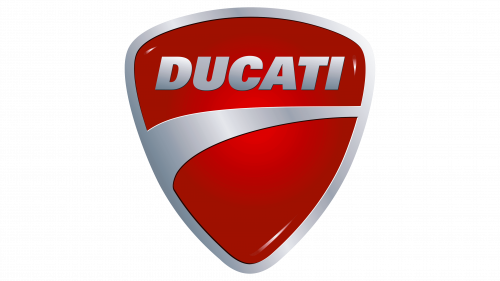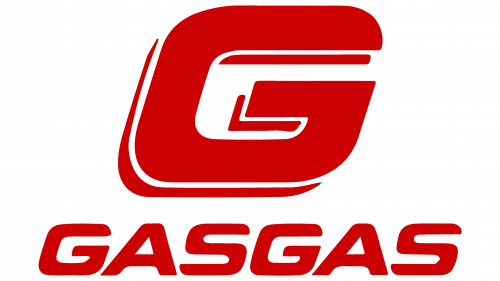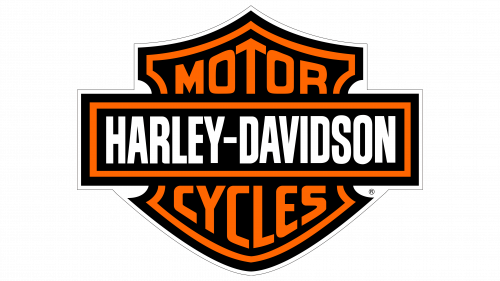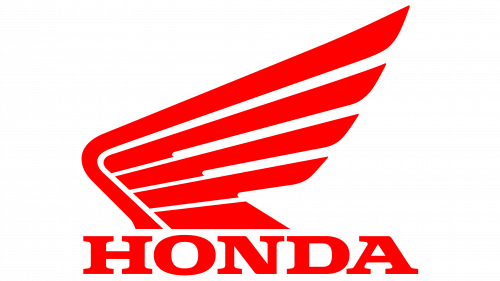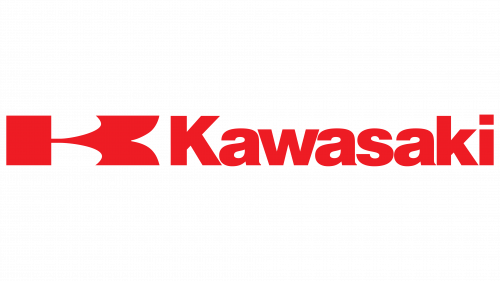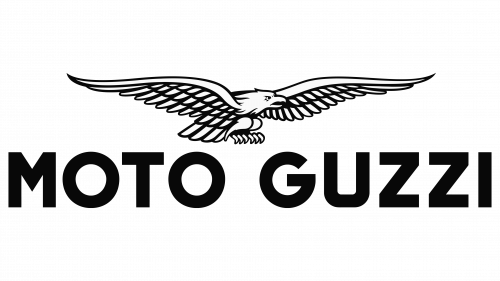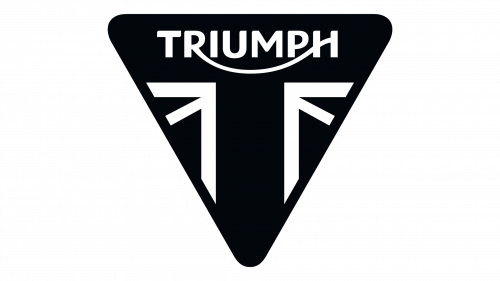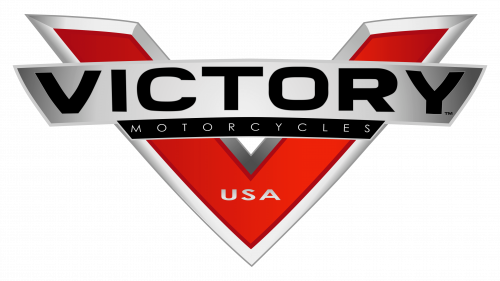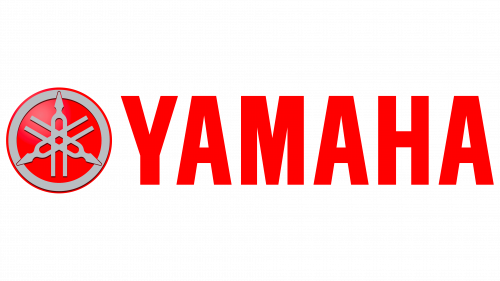The motorcycle industry is replete with many famous brands and their iconic emblems. For example, the mighty Japanese manufacturers Yamaha and Honda have long been staples in the world of motorcycling, and their prominence rivals that of American legend Harley Davidson. These companies share common traits for all their diverse backgrounds: a distinct personality, diverse products, and a rich history.
Branding in the motorcycle industry follows the same principle as in the automotive industry. The goal is not limited to superficial consumer appeal but to establish deep connections. Motorcycles are more than just mechanical constructs to many. They represent a deeper ethic, a lifestyle, and, for some, an unbreakable connection to a particular tribe or community. The emblem on the tank and the brand name on the engine case are symbols proclaiming allegiance to a particular creed.
Not all manufacturers opt for a monolithic approach in branding. Companies like BMW prefer to use a single logo across all models. This single emblem serves as a beacon of continuity and brand recognition. Some manufacturers utilize diversity in branding by creating different logos for different segments of their products.
There are many motorcycle brands worldwide, each with a story to tell through their name and logo. They represent more than just corporations; they symbolize unique stories, cultures, and heritages. Each emblem and brand name carries essence, soul, and history, and this uniqueness captivates motorcycle riders and fans worldwide.
Motorcycle brands: Famous motorcycle insignias
Motorcycle brand emblems are not just decorative elements but carefully crafted icons that embody the character and goals of the companies they symbolize. These symbols serve as visual reference points, resonating with experienced motorcyclists and novices alike, reflecting the essence and aspirations of each brand.
Some well-known motorcycle companies extend their brand reach far beyond motorcycles. Many products, from high-end helmets to stylish jackets, feature these iconic symbols.
These products aren’t just functional; they serve as accessories that allow fans to express their affection for the brand in various ways. Whether it’s a jacket emblazoned with their favorite emblem or a helmet with the same logo, these products strengthen the bond with the brand.
The spotlight is on some of the most famous companies that have left an indelible mark on the motorcycle industry. Known for their craftsmanship, these companies have become names respected worldwide.
Each logo is a unique image encapsulating decades or centuries of heritage, technological advancements, and community spirit in a simple yet profound design. They are not just emblems but badges of honor denoting a rich pedigree and promise of quality. Through this, one can better understand how these brands have shaped the industry and enriched the lives of countless enthusiasts worldwide.
Aprilia
Emerging from the ashes of World War II, Aprilia grew from a humble Italian bicycle manufacturer to an influential name in the motorcycle and scooter industry. The post-war era was challenging, but Aprilia’s resilience and innovation enabled it to navigate through these turbulent waters by switching from bicycles to motorcycles.
Aprilia’s reputation is not limited to producing only everyday bikes. The brand has carved a niche for itself in the sports bike segment and has a prominent footprint in motorcycling. Success stories on race tracks worldwide testify to Aprilia’s engineering prowess and competitive spirit.
The heart of the Aprilia brand is its emblem, a model of simplicity and efficiency. On the emblem, the brand name is typed in lowercase letters. This choice of font, while subtle, creates a sense of accessibility and warmth that suggests that the brand is not only about high-end performance but also about connecting with the masses.
The emblem embodies several meanings. The choice of red color for the background is not accidental. It evokes the passion, energy, and dynamism deeply rooted in Aprilia’s DNA. This color palette, combined with the unpretentious font, balances the brand’s racing heritage with its commitment to producing motorcycles for enthusiasts from all walks of life.
Benelli
Benelli Motorcycles, founded in the early 20th century, 1911, has cemented its status as an iconic Italian motorcycle brand hailing from the picturesque Italian region of Pesaro. Although not as widely recognized as some other titans of the industry, Benelli’s symbolism and motorcycles resonate with enthusiasts worldwide.
Benelli operates under the Qianjiang Motorcycle brand, a subsidiary of the huge Geely holding company. Its wide range of models includes racing and touring motorcycles, sport bikes, and efficient scooters.
The Benelli emblem is the foundation of its identity – a carefully crafted badge that seamlessly combines the brand’s rich history with its prominent status in the Italian motorcycle scene. The emblem features a lion, an eternal symbol of power and authority, representing the might and enduring heritage of Benelli Motorcycles.
Beta
Beta, a testament to the longevity of iconic motorcycle brands, hails from Italy and traces its history back to the early 20th century. Founded in 1904, this renowned company is still actively producing its machinery today, with its reputation being particularly strong in trike motorcycles.
Beta motorcycles have not gone unnoticed. Names like Albert Cabestany, Dougie Lumpkin, and Jordi Tarres resonate in trials, and their association with Beta motorcycles emphasizes the brand’s competitive edge. Regarding the brand’s achievements, 2018 was a landmark year, with more than 20,000 motorcycles produced.
The Beta emblem is filled with a bright and dynamic spirit. Its design is notable for a combination of elements uniting the printed sans-serif letters with which the company’s name is written. At the center of attention is a pronounced “B” in a bright red circle, reflecting the essence and exuberant character inherent in the brand.
Bimota
Created in Italy from a rich tradition of motorcycle building, Bimota stands out among other brands. Founded in 1973, this custom and production motorcycle company carries a heritage deeply intertwined with its founders, Bianchi, Morri, and Tamburini. Their influence is so great that the brand name amalgamates their surnames, skillfully transformed into a portmanteau that resonates with motorcycle enthusiasts.
Bimota has produced many racing motorcycles, with models such as the HDB1 and Bimota YB3 leaving a significant mark on the racetrack. The constant evolution of Bimota motorcycle design and performance is evident in recent models such as the KB4 and Tesi H2, further cementing the company’s reputation as a high-performance machine manufacturer.
The Bimota logo is the epitome of modern simplicity. The bold sans-serif font with all lowercase letters vividly and memorably represents the brand name. The design of the letter “B” in the emblem is intriguing. The abbreviated ascending part of the emblem cleverly follows the wheel’s shape, symbolizing movement.
BMW
As a leader in the automotive industry, BMW is not limited to producing four-wheeled vehicles. A lesser-known side of BMW’s extensive heritage is its involvement in motorcycle manufacturing under the BMW Motorrad banner. This division has been in operation since 1921, reflecting the brand’s long-standing commitment to developing and designing two-wheeled vehicles.
An important milestone in the glorious history of BMW Motorrad was the appearance of the R32 model in 1923. This motorcycle, equipped with a distinctive boxer engine, marked BMW’s first entry into the motorcycle market.
The logo adorning BMW motorcycles testifies to the company’s deep history and pride in its origins. The circular emblem pays homage to the company’s Bavarian roots and is identical to the car emblem. The emblem inverts the colors of the Bavarian flag originally, subtly emphasizing the brand’s rich heritage and connection to its homeland.
The emblem’s iconic blue and white quarters are more than just colors; they tell a story. They emphasize BMW’s commitment to excellence, precision, and the constant search for innovation – traits that the brand has consistently demonstrated since its inception. Whether luxury sedans or powerful motorcycles, the emblem is a beacon of trust.
Ducati
Ducati, hailing from Italy, is synonymous with high-performance motorcycles. A notable aspect of its corporate structure is that it is a subsidiary of Ducati Motor Holding, owned by Lamborghini and part of the colossal Volkswagen Group. This multi-level ownership structure reinforces the brand’s importance in the automotive sector.
Ducati’s motorcycle division, which dates back to 1926, has quickly gained a reputation for producing some of the most maneuverable and fastest motorcycles ever to hit the roads and trails. More than just for transportation, these motorcycles have come to symbolize innovation, design excellence, and extraordinary speed, setting benchmarks that competitors strive to equal.
The Ducati emblem, a shield, speaks volumes while keeping it simple. The motorcycle’s design seamlessly complements the emblem.
The bright red color scheme is not just an aesthetic element; it embodies many values of the brand: zeal, determination, and relentless pursuit of progress. More than just a color, it embodies Ducati’s corporate philosophy and is a tribute to the company’s Italian heritage, known for its passion for design and engineering.
The “Ducati” lettering is presented in bold block letters that stand out well, especially against the red background. This trademark is not just designed to be read; it is designed to be memorable. The letters are immediately eye-catching, emphasizing the brand’s influential position in the high-powered motorcycle market.
Gas Gas
Founded in 1985, Gas Gas is a Spanish brand that produces off-road motorcycles. Designed specifically for enduro and trial competitions, these motorcycles have carved a niche in the off-road segment.
In 2019, the brand underwent a major change when it was acquired by KTM Motorcycles. This transition led to the sale of Gas Gas’s off-road models to another motorcycle manufacturer, Rieju Motorcycles.
Gas Gas manufactures motorcycles and forges ties with famous figures in the motorcycle sport. A prime example is the acquisition of famous champion Jordi Tarres, who was persuaded to switch from Beta to Gas Gas. This move raised Gas Gas’s profile and cemented its reputation as a formidable player in the Trials and Enduro circuits.
Branding is another aspect in which Gas Gas reflects its dynamism. The company’s logo uses intense red hues to convey the essence of passion and power that the brand embodies. The design creatively utilizes white space to form the letter “G,” allowing this element to spell out the initials of the company’s name.
Harley-Davidson
Harley-Davidson is a brand that is hard to miss in the motorcycle industry and resonates worldwide. The American company, which traces its history back to 1903, has grown into one of the largest motorcycle manufacturers with a significant global presence.
The Harley-Davidson emblem is easily recognizable and includes many design elements that make it special. It consists of a black banner outlined in orange that features the company’s name. This banner overlaps a shield-shaped element that reads “Motorcycles,” the brand’s distinctive orange-white-black color scheme. The bold hues contrast sharply, making the emblem easily visible even from a distance.
The emblem’s text is large and stylized, creating a sense of strength and reliability. This is not just a design choice; it reflects the brand’s heritage of building rugged and reliable motorcycles capable of overcoming all kinds of obstacles. Every element of the emblem—the shape, the color scheme, and the font—has been carefully selected to create an image of strength, tradition, and reliability.
Hero
The Hero MotoCorp group of companies, remembered by many as Hero Honda, has firmly established its roots in India and has grown into a prominent multinational motorcycle and scooter manufacturing company. Its credibility is very high, and it is recognized as the leading manufacturer of two-wheelers globally. In the vibrant Indian market, this titan has a significant market share of 37.1%.
The company is responsible for launching various vehicles that have gained global attention. Models like Hero Honda Passion and Hero Karizma R have brought the company’s name into the annals of motorcycle history. There was a period when Hero MotoCorp and Honda collaborated in joint endeavors, but this alliance ended with the advent of 2010.
The Hero logo artfully combines various geometric shapes and masterfully uses negative space. The culmination of this design strategy is the symbolic letter “H,” created from a trio of black, white, and red colors. Beneath this emblem is the inscription “Hero” in a distinctive font.
Honda
Although Honda is mostly known for its automobiles, the company is also active in the motorcycle industry. Unlike the automobile division, the motorcycle division uses a separate emblem specifically designed for a different market audience.
The motorcycle emblem retains the Honda word mark but features a darker red shade than its automotive counterpart. However, the emblem is not the only distinguishing factor. Instead of the usual silver letter “H” that adorns the emblem of the automotive division, a wing in a deep red color draws attention.
This emblematic wing serves several strategic purposes at once. It effectively conveys attributes vital in motorcycles: speed and power. The color choice – a deep and bold red – underscores the brand’s commitment to performance and engineering reliability. The metallic hue of the fender lines subtly signals the company’s high manufacturing standards.
With this unique emblem, Honda aims to resonate with motorcycle enthusiasts by emphasizing the performance and engineering quality the brand is known for worldwide. Each component of the emblem – from the font to the color to the fender element – is carefully selected to contribute to the overall brand picture that sets Honda’s motorcycle division apart in a highly competitive market.
Husqvarna
Originally from Sweden and now based in Austria, Husqvarna Motorcycles GmbH may not be immediately recognizable like some of its peers in the motorcycle industry. However, its heritage is undeniable in motocross, supermoto, and enduro.
Based in Sweden, Husqvarna began its journey in the motorcycle industry as an extension of a larger organization. Pivots and business evolution led to the company’s takeover by PIERER Mobility Group, further strengthening its presence in the world of motorcycling.
One of Husqvarna’s hallmarks is its emblem, which perfectly reflects the brand’s pedigree and tradition. Moving away from the often-used red hues in the logos of various motorcycles, Husqvarna has opted for a deep blue hue. This choice is in keeping with the brand’s historical roots.
Indian Motorcycle
Founded in 1901, Indian Motorcycle is one of the most iconic American motorcycle brands with over a century of heritage. The company originally operated under the “Hendee” brand name but rebranded in 1923 to become the Indian Motorcycle Manufacturing Company.
The company boasts an extensive lineup of motorcycles. Notable among them are the Challenger and Challenger Dark Horse models, which debuted in 2020 and reaffirmed the brand’s commitment to quality design.
The brand’s emblem reflects its rich history and commitment to excellence. The logo, which combines an elegant cursive script with a crisp sans-serif font, blends tradition and modernity. The choice of colors—a rich combination of red and brown—conveys the sense of passion and strength that the brand embodies.
With this logo, Indian Motorcycle conveys its values, rich past, and forward-looking vision that resonates with longtime enthusiasts and new motorcyclists.
Kawasaki
Kawasaki is one of the biggest motorcycle market players and is part of Kawasaki Heavy Industries Ltd. This global conglomerate has a hand in various products, ranging from aerospace equipment to two-wheelers that enthuse enthusiasts worldwide.
Kawasaki’s motorcycle lineup is as extensive as it is impressive. From adrenaline-charging Ninja sportbikes to relaxed cruisers, rugged dual-purpose motorcycles, and motocross bikes, there is a Kawasaki motorcycle for every rider.
The centerpiece of Kawasaki is its emblem. The bright red emblem is immediately eye-catching and symbolizes the energy and enthusiasm inherent in the brand. The straight sans-serif font creates a sense of modernity and accessibility. However, the distinctive design of the letter “K” sets the brand apart, making it clear that the company strives to stand out in a market crowded with competitors.
The emblem is a beacon for riders and enthusiasts, promising unrivaled performance and thrilling adventure.
KTM
Kraftfahrzeug Trunkenpolz Mattighofen, often abbreviated as KTM, hails from Austria and has a rich history of manufacturing motorcycles, sports cars, and bicycles. With historical roots dating back to 1934, the company emphasizes its “official” founding in 1992, a turning point in its journey.
Known primarily for its craftsmanship in off-road motorcycles, KTM produces high-performance machines such as enduro, motocross, and agile superbikes. KTM’s reputation in motorcycling is undeniable and resonates with enthusiasts and professionals alike.
The KTM emblem features a striking combination of orange and black. Bold black typography, reflecting the brand’s reliability and long heritage in the industry, anchors the emblem.
A notable aspect of KTM’s branding is the choice of orange, a hue not often seen in the automotive industry. Only a few, including Harley Davidson, use this hue, making KTM’s decision even more striking and memorable in the marketplace.
Moto Guzzi
Founded in 1921, Moto Guzzi is a testament to Europe’s success in motorcycle manufacturing. As one of the pillars in the history of Italian motorcycling, its influence extends far beyond the country’s borders, causing revolutionary changes in motorcycle design and functionality worldwide.
Moto Guzzi is at the forefront of reshaping the motorcycle industry. The brand has pioneered several groundbreaking innovations, including the revolutionary motorcycle center stand and the powerful eight-cylinder engine, which has significantly impacted motorcycle design and mechanics.
At the heart of the Moto Guzzi brand is its emblematic logo, with the company name printed in a strict sans-serif font. Above it rises a stylized bird in flight, symbolizing motorcycles’ unbridled freedom and breathtaking speed. This emblem resonates with enthusiasts, conveying Moto Guzzi’s rich heritage and the eternal thrill of motorcycling.
MV Agusta
In 1945, MV Agusta Motor SPA, commonly called MV Agusta, became a separate division of the famous aircraft manufacturer Agusta. Its name is an acronym where “MV” stands for “Meccanica” or “Mechanics” in English, intertwined with “Verghera” – the place where the first motorcycle models were born.
The MV Agusta racing team has left an indelible mark on the competition scene. Their track record includes many victories and rare and classic street motorcycle models that have been admired over the years.
According to some observers, MV Agusta’s emblem leans towards traditionalism, but it certainly retains its distinctive character. The prominently positioned gleaming gold gear is complemented by a pair of elegant blue wings, symbolizing speed and freedom. MV Agusta’s unique color palette not only highlights its rich heritage but also allows it to occupy a unique position among its contemporaries in the motorcycle industry.
Norton
Founded in 1898 and originally known as Norton Motors, Norton Motorcycle Company hails from Birmingham, England, a region with a rich industrial heritage. After a brief hiatus, the company was reborn in 2008, marking its return to the production line.
Norton continues on its journey, catering to a loyal following of fans who appreciate the brand’s historical significance and engineering pedigree. Norton motorcycles represent a unique blend of traditional British craftsmanship combined with modern technology that buyers.
The company logo is central to the brand identity and a testament to Norton’s heritage. Despite its apparent simplicity, the logo has a surprising impact. The letters of the logo are in a decorative font, intricately linked together and reminiscent of the streamlined body of a motorcycle. This clever design subtly emphasizes the brand’s core focus on motorcycle manufacturing.
Royal Enfield
Founded in 1955, Royal Enfield is a testament to the enduring legacy of British craftsmanship in motorcycle manufacturing, although it is headquartered in Chennai, Tamil Nadu, India. Royal Enfield has the reputation of being the world’s oldest motorcycle brand without a break in production since 1901, albeit under a different nomenclature.
The Royal Enfield emblem exudes classic elegance. It features the company’s name in a customized font.
Royal Enfield’s trademark is dipped in red, in line with many famous motorcycle logos. This choice is not accidental. The color red evokes enthusiasm, dynamism, and intensity – attributes that align well with the energetic ethics of motorcycle enthusiasts.
Suzuki
Suzuki Motor Corporation, hailing from Minami-Ku, Japan, is one of the leaders in the global automotive industry. With a rich history and vast scope, this brand is known for its wide range of automobiles. While many people know Suzuki for its automobiles, its portfolio extends far beyond ordinary cars. From all-terrain vehicles to motorcycles and even specialized mobility aids such as wheelchairs, Suzuki’s commitment to catering to a wide variety of transportation needs is evident.
Having established itself as a major player in the automotive world, Suzuki’s commitment to quality is reflected in its diverse range of vehicles.
Suzuki leaves a lasting impression. Its emblem in the form of a stylized “S” in bright red immediately attracts attention. This dominant red color is complemented by the brand name written in deep blue, creating a visual synergy. The fusion of red and blue creates a visually appealing logo with symbolic weight.
SYM Motors
Sanyang Motor Company, known as SYM, was born in 1954 in the heart of the Taiwanese city of Hukou. Over the years, this Taiwanese company has expanded its presence and has three central manufacturing hubs strategically distributed across Taiwan, Vietnam, and China.
SYM is known for producing a wide range of motorcycles, scooters, and ATVs, but its expertise doesn’t end there. The company is expanding its range by producing mini trucks and passenger cars. These vehicles proudly bear the Hyundai brand name, signaling a collaboration that expands the capabilities of both companies.
SYM Motors presents an emblem that cannot be described as anything but captivating. The emblem’s combination of blue and red colors subtly conveys the reliability and fresh excitement that drives the brand forward. This image is further enhanced by the font, which is slightly slanted to the right, reflecting the notion of forward motion and maneuverability. A notable detail of the word mark is the letter “Y” – a bright red arrow pointing to the right, symbolizing the brand’s momentum, direction, and unwavering commitment to progress.
Triumph
Triumph Motorcycles Limited, which dates back to 1902, underwent a major revitalization in 1983. This revival took place under the leadership of John Bloor, who revived the brand when the original company faced financial difficulties. The revived company continued the motorcycle production line and introduced innovations, thus ensuring quality.
While Triumph is firmly associated with lightweight motocross motorcycles, the company’s offerings are diverse. The Triumph lineup caters to a wide range of motorcycling enthusiasts, from the prowess of motocross variants to the stability and comfort of touring motorcycles. The company has made strides in exploring and producing alternative vehicles, further expanding its market reach.
Triumph’s branding is a design that epitomizes simplicity yet speaks volumes. The logo predominantly contains the brand’s name in a brightly colored serif font, with the black letters contrasting sharply with the pure white background. This minimalist approach is punctuated by a thoughtful design element, albeit a very subtle one. A linear connection between the letters “H” and “R” is found within the wordmark. This line, reminiscent of a winding road, symbolizes the journey and adventure that riding a Triumph motorcycle promises.
Victory
Starting its journey in 1998, Victory Motorcycles quickly became a well-known American motorcycle manufacturer. In almost two decades, the brand has carved a niche by introducing various models resonating with motorcycle enthusiasts. Models such as the Vegas, Gunner, and Hammer 8-Ball have become iconic in the motorcycle community.
Although motorcycle production was discontinued in January 2017 and Indian Motorcycles succeeded the brand, the city’s streets still bear witness to Victory’s legacy. Many fans ride their favorite Victory motorcycles with care and concern for their heritage.
The brand’s identity is enshrined in its logo. The logo is more than just a visual representation of the company’s name on a sleek silver banner overlaid with a bold combination of silver and red in the shape of a “V.” It embodies Victory Motorcycles’s dynamism, vitality, and resilience. Red and silver colors are eye-catching and evoke a sense of passion and power.
Yamaha
Firmly rooted in Japan, Yamaha is a testament to the country’s engineering prowess and pioneering spirit. Emerging in 1955 as Yamaha Corporation, the company soon carved out a niche in motorcycle and marine products.
While Yamaha is globally recognized for its signature motorcycles, its range extends much further than that. Yamaha’s commitment to engineering excellence and adaptability is evident from maneuverable scooters and advanced electric motorized bicycles to sophisticated sailboats and high-performance personal watercraft. This broad lineup underscores the brand’s significant presence in the Japanese market and globally.
The Yamaha logo, in vibrant red, represents the company’s dynamism and commitment to new experiences. In addition to the color, the logo contains a distinctive symbol consisting of three crossing forks. At its core, this logo symbolizes the harmonious trinity of production, technology, and sales.
The Power and Legacy Behind Famous Motorcycle Brand Logos
Motorcycle manufacturers worldwide realize the importance of spectacular images and distinctive logos. More than illustrations, these emblems are powerful tools for establishing a deep connection with a global audience and communicating a brand’s essence.
Like their counterparts in the automotive industry, motorcycle companies use their emblems to accomplish two critical tasks: to carve a niche in a competitive marketplace and to evoke an emotional response from their customers. These emblems largely translate the brand’s heritage, philosophy, and core values, embodying its spirit in a limited space.
There are some common design trends in the world of motorcycle logos. These include using large block text and the dominance of the color red. Within these common design elements, there is a spectrum of innovation. Each brand strives to incorporate a unique narrative, heritage, and vision into its emblem. The result is a mosaic of logos, each telling a different story while reflecting the rich tapestry of the motorcycle industry.
From established giants with decades-long legacies to new players offering fresh perspectives, motorcycle brand symbols are as diverse as the motorcycles they represent.
